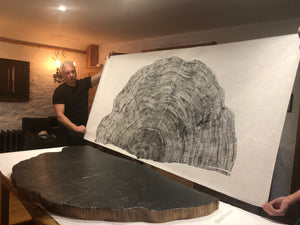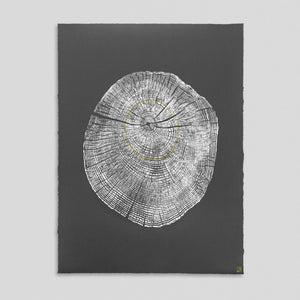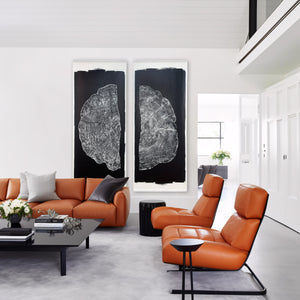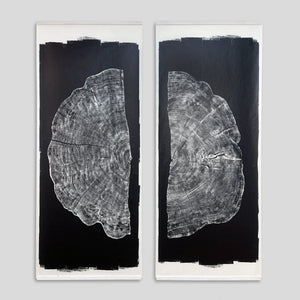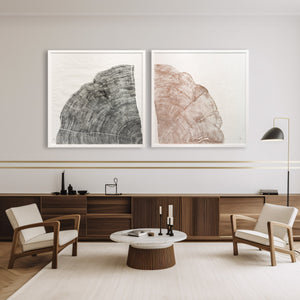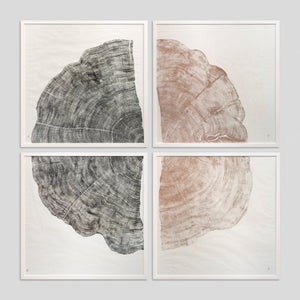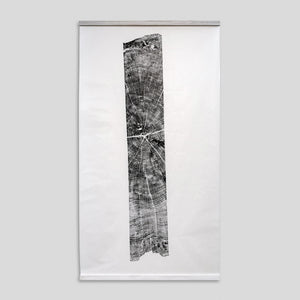The Creative Process of Mono Relief Printmaking
Jul 06, 2023
In my journey as an artist, I've always been drawn to the allure of making tangible the ephemeral. Over time, I've discovered that art, in its many forms, is one of the most evocative ways to encapsulate the fleeting nature of our experiences. And within this broad realm, mono relief printmaking has emerged as one of my preferred mediums.
Printmaking, as an art form, has a rich heritage dating back to the earliest civilisations. It was initially employed for disseminating religious texts and imagery, but over centuries, evolved into a fully-fledged artistic medium. It embodies a myriad of techniques – from woodcuts and lithography to etching and screen printing, each carrying its unique aesthetic and technical facets.
Among these many techniques, mono relief printmaking possesses a particular charm that truly captivates me. A process rooted in the ancient art of relief printmaking, it involves carving an image into a flat surface, with the raised (uncarved) parts capturing the ink and imprinting an image when pressed against paper. Unlike many other forms of printmaking, mono relief printmaking creates a singular, unrepeated print each time, embodying a unique blend of deliberate design and artistic serendipity.
Interestingly, my fascination with mono relief printmaking draws me back to my university days. Before the digital design world took over, hands-on processes formed an integral part of my learning. The smell of ink, the texture of paper, the physicality of the print press – these visceral experiences have stayed with me. And now, years later, the opportunity to reconnect with these sensations through mono relief printmaking has been incredibly enriching.
The creative process of mono relief printmaking starts long before the ink meets the paper, in the instance of my work it begins with the careful selection and meticulous preparation of the wood. As with a sculptor contemplating a block of marble, I look for a piece of wood that carries a story within its grain, a narrative that can add depth and context to the final artwork.
Once selected, the wood is plained (or sanded down) to smooth any rough edges or inconsistencies, creating a consistent flat surface; a seemingly trivial imperfection can drastically impact the final print, altering its textures and patterns. The wood is then subjected to a unique Japanese fire technique called "Shou Sugi Ban." This method, employed traditionally to preserve and waterproof wood, involves lightly charring the wood's surface. This process not only enhances the wood's grain but also creates a surface that can hold the ink better, adding a layer of texture and visual depth to the final print.


Choosing the right paper is another crucial step in the process. The selected paper must strike a balance – it needs to be robust enough to endure the pressure of printing, yet delicate enough to absorb the ink and express the fine details of the design. Washi paper, traditional Japanese paper known for its strength and absorbency, has often been my go-to choice.

The application of ink and the pressing process is an art form in itself. The mono print is created by a single press; hence the ink application needs to be precise, neither too sparse nor too dense. Then comes the delicate dance of pressure application. Too much pressure risks damaging the paper, smudging the print or even tearing it, too little and the ink may not fully adhere. It requires a delicate touch, a keen sense of intuition, and an inherent understanding of the materials at hand. My canvas prints can take a little bit of a beating in comparison and are much more forgiving.

The journey from a piece of wood to a mono relief print is a voyage of discovery. With each print, I not only explore the intricate dance between the ink, pressure, and wood, but I also delve deeper into understanding the symbiotic relationship between man, nature, and art. And through these prints, I hope to inspire in others a deeper appreciation for our shared environment and a broader understanding of the possibilities that the art of mono relief printmaking presents.

